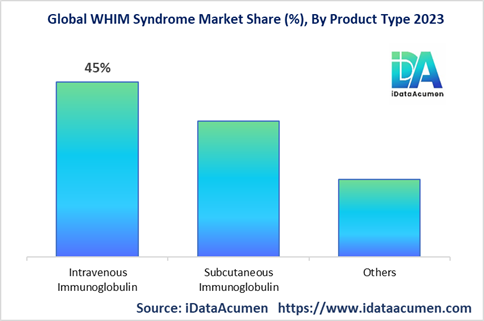Global WHIM Syndrome Market is expected to reach US$ 472.5 Mn in 2031 with a CAGR of 4.2%.
WHIM syndrome is a rare primary immunodeficiency disease characterized by susceptibility to infections, warts, hypogammaglobulinemia, and myelokathexis. The WHIM market comprises diagnostic testing and therapeutic management for this genetic disorder. Key drivers fueling growth include rising prevalence of primary immunodeficiencies, advancements in genetic screening, and launches of therapies like immunoglobulin replacement and monoclonal antibodies.
The increasing diagnosis rates due to improved awareness and testing techniques are contributing significantly to market growth. Companies are also actively developing novel therapies like gene therapies, which create long-term opportunities. Favorable reimbursement policies in developed regions further propel adoption of WHIM treatments.
North America dominates the WHIM syndrome market presently, accounting for over 40% revenue share. High healthcare expenditure, robust infrastructure, and presence of key players like Takeda, CSL Behring, and ADMA Biologics drive the North America market. Europe is the second largest region, aided by government funding and initiatives around rare immunodeficiencies. Asia Pacific is poised to register the fastest growth over the forecast period owing to expanding patient pool and healthcare investments in emerging economies.

Market Drivers:
- Increasing prevalence of primary immunodeficiencies globally is a key factor driving WHIM syndrome market growth. PID incidence is estimated around 1 in 1200 births, leading to larger diagnosis rates.
- Rising awareness among physicians and patients is leading to reduced time to diagnosis for WHIM syndrome, enabling earlier treatment and better outcomes.
Market Trends:
- Use of multi-disciplinary approaches involving immunologists, geneticists, and infectious disease specialists for managing WHIM syndrome.
- Emergence of gene therapies, gene editing, and stem cell transplants provide potential cure for WHIM syndrome.
Market Opportunity:
- Strategic partnerships between biotech firms and large pharmaceutical companies to accelerate the WHIM syndrome pipeline and product commercialization.
Key Report Insights:
- North America accounted for over 40% share of the WHIM syndrome market in 2022, driven by high awareness, favorable reimbursement, and presence of companies like Takeda, CSL Behring, ADMA Biologics, and Octapharma.
- Europe represented the second largest market with over 30% share, aided by screening programs and funding for rare immunodeficiencies.
- Leading companies operating in the WHIM market include Takeda, CSL Behring, Grifols, ADMA Biologics, Octapharma, and Emergent BioSolutions.
Market Segmentation:
- By Product Type
- Intravenous Immunoglobulin
- Subcutaneous Immunoglobulin
- Others (G-CSF, Interferon etc)
- By Application
- Hypogammaglobulinemia
- Neutropenia
- Human Papillomavirus Infections
- Others (recurrent infections, warts)
- By End-User
- Hospitals
- Clinics
- Others
- By Region
- North America
- U.S.
- Canada
- Europe
- Germany
- U.K.
- Spain
- France
- Italy
- Russia
- Rest of Europe
- Asia Pacific
- China
- India
- Japan
- Australia
- South Korea
- ASEAN
- Rest of Asia Pacific
- Latin America
- Brazil
- Argentina
- Mexico
- Rest of Latin America
- Middle East & Africa
- GCC Countries
- Israel
- South Africa
- North Africa
- Central Africa
- Rest of the Middle East
- North America
Definition:
“The WHIM syndrome market refers to the therapeutics, diagnostics, and overall healthcare solutions utilized for the rare genetic disorder called WHIM syndrome. WHIM syndrome is characterized by warts, hypogammaglobulinemia, immunodeficiency, and myelokathexis. It is caused by genetic mutations in the CXCR4 gene leading to diverse clinical manifestations. The WHIM syndrome market consists of immunoglobulin replacement therapies, HPV and infection treatments, and emerging gene and cell therapies seeking to address this rare disease.”